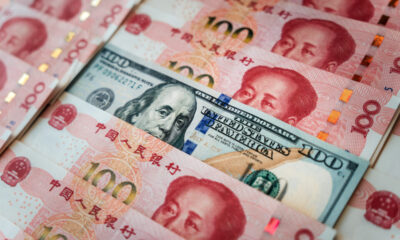Science
Public Toilets in China Require Ads for Toilet Paper Access

In a novel approach to managing public resources, some public toilets in China now require users to watch advertisements to obtain toilet paper. A video recently shared by China Insider, an outlet co-produced by anti-China media groups NTD and The Epoch Times, illustrates the unusual process. Users must scan a QR code with their smartphones to activate a toilet paper dispenser, after which they can either pay a small fee or watch a commercial.
While the effectiveness and practicality of this system remain subjects of debate, it is designed to address the issue of toilet paper misuse in public facilities. The outlet did not disclose the specific location of the video, leaving questions about whether this setup is found in a private establishment like a McDonald’s, a shopping mall, or a subway station.
Addressing Toilet Paper Theft
The implementation of this system appears to be a response to a longstanding problem in China: the theft of toilet paper from public restrooms. A 2017 report from the New York Times highlighted how park managers in popular tourist areas struggled with quickly depleting supplies of toilet paper. Surprisingly, the issue was not tourists but rather local residents taking advantage of free resources.
“He Zhiqiang,” a service worker quoted in the New York Times, noted, “The people who steal toilet paper are greedy. Toilet paper is a public resource. We need to prevent waste.” This sentiment reflects a broader concern that stems from decades of poverty in the country, which has left some individuals eager to exploit publicly available goods.
Public Facilities and Resource Management
The situation is exacerbated by the fact that many public toilets in China do not provide toilet paper as a standard amenity. Instead, a “bring your own toilet paper” (BYOTP) system is common, particularly in less affluent areas. While this practice is gradually changing in more tourist-centric regions, the introduction of advertising as a means of funding toilet paper access raises questions about the balance between resource management and user experience.
The reliance on ad technology has emerged as a potential solution to mitigate waste, although the effectiveness of such measures remains to be seen. As China continues to navigate the complexities of modernization and resource allocation, these innovative approaches to public amenities may become more commonplace.
In summary, the trend of linking toilet paper access to advertisements highlights the challenges of managing public resources in an increasingly commercialized environment. While it may streamline the distribution of toilet paper, it also raises important questions about equity and accessibility in public facilities.
-

 Technology4 months ago
Technology4 months agoDiscover the Top 10 Calorie Counting Apps of 2025
-

 Health2 months ago
Health2 months agoBella Hadid Shares Health Update After Treatment for Lyme Disease
-

 Health3 months ago
Health3 months agoErin Bates Shares Recovery Update Following Sepsis Complications
-

 Technology3 weeks ago
Technology3 weeks agoDiscover 2025’s Top GPUs for Exceptional 4K Gaming Performance
-

 Technology2 months ago
Technology2 months agoElectric Moto Influencer Surronster Arrested in Tijuana
-

 Technology4 months ago
Technology4 months agoDiscover How to Reverse Image Search Using ChatGPT Effortlessly
-

 Technology4 months ago
Technology4 months agoMeta Initiates $60B AI Data Center Expansion, Starting in Ohio
-

 Technology4 months ago
Technology4 months agoRecovering a Suspended TikTok Account: A Step-by-Step Guide
-

 Health4 months ago
Health4 months agoTested: Rab Firewall Mountain Jacket Survives Harsh Conditions
-

 Lifestyle4 months ago
Lifestyle4 months agoBelton Family Reunites After Daughter Survives Hill Country Floods
-

 Technology3 months ago
Technology3 months agoUncovering the Top Five Most Challenging Motorcycles to Ride
-

 Technology4 weeks ago
Technology4 weeks agoDiscover the Best Wireless Earbuds for Every Lifestyle





















